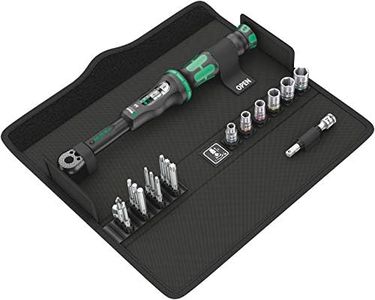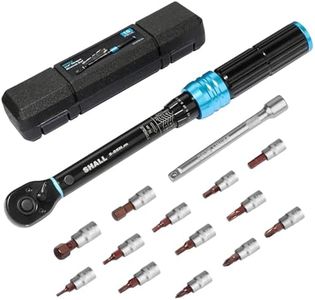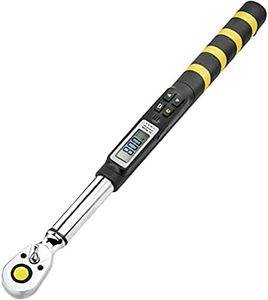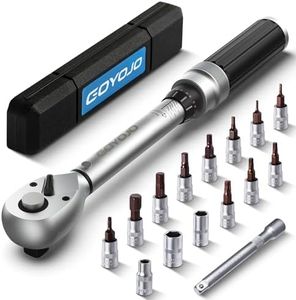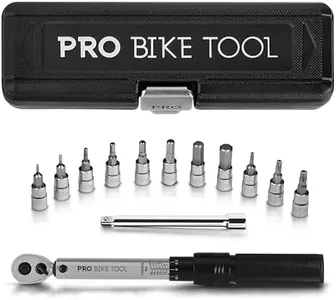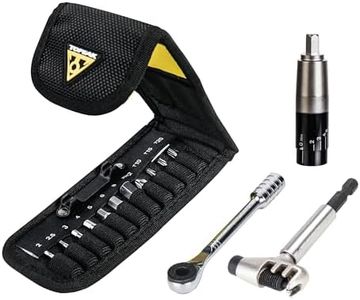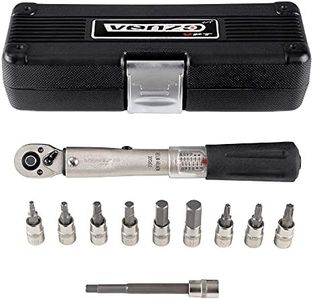We Use CookiesWe use cookies to enhance the security, performance,
functionality and for analytical and promotional activities. By continuing to browse this site you
are agreeing to our privacy policy
10 Best Bike Torque Wrench
From leading brands and best sellers available on the web.Buying Guide for the Best Bike Torque Wrench
Choosing the right bike torque wrench is important for keeping your bike safe and well-maintained. A torque wrench helps you tighten bolts and screws to the correct specification, so nothing is too loose or too tight. This prevents damage to delicate bike parts and ensures a secure assembly. When selecting a torque wrench, it's helpful to understand some of the main features and how they fit your needs as a cyclist.Torque RangeThe torque range is the minimum and maximum amount of force the wrench can measure and apply, usually given in Newton-meters (Nm). This is crucial because different bike components require different torque settings, and using a wrench with the right range makes you less likely to overtighten or strip bolts. Lower ranges (like 2-14 Nm) are best for smaller, more delicate bike parts like seat posts or handlebars, while higher ranges (up to 60 Nm or more) are for bigger bolts like crank arms or bottom brackets. To pick the best one, consider the type of maintenance you’ll do and check your bike’s manual for recommended torque settings.
Type of Torque WrenchThere are a few main types: beam, click, and digital. Beam wrenches are simple and durable but need a steady hand to read the scale. Click wrenches give an audible or physical click when you've reached the set torque, making them easy to use for beginners. Digital wrenches display the torque reading on a screen and sometimes beep or vibrate, providing the most accuracy and ease of use. Entry-level users or those who want reassurance will often prefer click or digital types. Your choice depends on how precise you need to be and how comfortable you are with each style.
Drive SizeDrive size refers to the size of the wrench’s socket mount—usually measured in inches (like 1/4", 3/8", or 1/2"). For bike work, 1/4" is most common because it fits the smaller bits and sockets needed for bicycles. 3/8" is sometimes used for larger bolts. Choose your drive size based on the bolts you’ll encounter most often on your bike.
AccuracyAccuracy is how close the wrench is to delivering the torque you set or read. This is often stated as a percentage (like ±4%). The more accurate the wrench, the better it will protect your bike parts from accidental overtightening or undertightening. For most bike work, look for a wrench with an accuracy within ±4% for good confidence in every adjustment. Consider how critical precise torque is for your bike, especially if you have carbon parts.
Easy-to-Read ScaleThe scale is where you read your torque settings. Some wrenches use etched, printed, or digital readouts. Easy-to-read scales mean less chance of setting the wrong torque, which is especially important if you’re adjusting several bolts in a session. If your eyesight is less than perfect or you’ll often be working in dim conditions, choose a wrench with a clear, bright, or digital display.
Included Bits or AttachmentsSome torque wrenches come with a set of tool bits or sockets, such as hex heads or Torx bits, which are most common on bikes. Having the right bits included saves hassle and money, and ensures compatibility with common bike bolts. If you already have bits, this is less important, but many riders appreciate a complete set for convenience.
